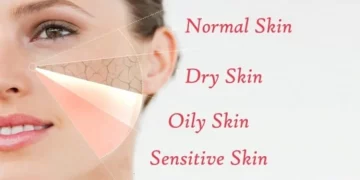Sunscreen is an essential part of any skincare routine, playing a vital role in protecting our skin from harmful UV radiation that can cause sunburn, premature aging, and even skin cancer. However, not all sunscreens are created equal. The two main categories of sunscreen—chemical and physical (also known as mineral)—each have unique benefits and drawbacks. Understanding the differences between the two can help you choose the right sunscreen for your skin type, lifestyle, and sun protection needs. In this article, we will dive deep into the science behind chemical and physical sunscreens, their respective pros and cons, and how to select the best option for your skin.
1. What is Sunscreen and Why Do You Need It?
Before delving into the specifics of chemical and physical sunscreens, it’s important to understand why sunscreen is necessary. Our skin is exposed to harmful ultraviolet (UV) rays from the sun, which come in two main types: UVA and UVB. UVA rays penetrate deep into the skin, leading to premature aging, wrinkles, and dark spots. UVB rays are responsible for sunburns and can cause skin damage that increases the risk of skin cancer.
Sunscreen works by either absorbing these harmful rays (chemical sunscreen) or reflecting them away (physical sunscreen). Regardless of the type, the purpose of sunscreen is to shield the skin from these damaging rays, preventing both immediate harm (sunburn) and long-term consequences (skin aging, wrinkles, and skin cancer).
2. Chemical Sunscreen: How It Works
Chemical sunscreens, also known as organic sunscreens, contain active ingredients that absorb UV rays and convert them into heat, which is then released from the skin. These sunscreens typically contain one or more chemical filters that work together to protect against both UVA and UVB radiation.
2.1 Common Ingredients in Chemical Sunscreens
Some common ingredients found in chemical sunscreens include:
- Avobenzone: Absorbs UVA rays, protecting against aging and dark spots.
- Octinoxate: Effective against UVB rays, helping prevent sunburn.
- Oxybenzone: Provides broad-spectrum protection but may be irritating for sensitive skin.
- Homosalate: Absorbs UVB rays to prevent burning.
- Octocrylene: Works with other ingredients to enhance sunscreen stability and effectiveness.
These active ingredients work by absorbing UV radiation and turning it into harmless heat. The heat is then dispersed away from the skin. Chemical sunscreens tend to have a thinner, lighter consistency, making them more suitable for daily wear, especially for those who prefer a non-greasy finish.
2.2 Advantages of Chemical Sunscreens
- Invisible Finish: Chemical sunscreens are often clear and lightweight, making them ideal for daily use, particularly under makeup.
- Non-Greasy: They typically feel lightweight on the skin and do not leave a white residue, which can be common with physical sunscreens.
- Broad Spectrum Protection: Many chemical sunscreens provide protection from both UVA and UVB rays, offering comprehensive sun defense.
2.3 Disadvantages of Chemical Sunscreens
- Skin Sensitivity: Chemical sunscreens can cause irritation or allergic reactions in sensitive individuals. Ingredients like oxybenzone, avobenzone, and octinoxate can trigger skin irritation, redness, or rashes.
- Chemical Absorption: Some people prefer to avoid products that contain chemicals absorbed into the skin. There have been concerns about certain chemical sunscreen ingredients being absorbed into the bloodstream, although the long-term effects of this absorption are still debated.
- Environmental Impact: Certain chemical ingredients, particularly oxybenzone and octinoxate, have been linked to coral reef damage. Some countries and regions have banned these ingredients to protect marine life.
3. Physical Sunscreen: How It Works
Physical sunscreens, also called mineral sunscreens, work by sitting on top of the skin and physically blocking or reflecting UV rays. They contain active mineral ingredients like zinc oxide and titanium dioxide, which create a physical barrier that deflects UV radiation away from the skin.
3.1 Common Ingredients in Physical Sunscreens
- Zinc Oxide: Offers broad-spectrum protection by reflecting both UVA and UVB rays. It is a key ingredient in most physical sunscreens.
- Titanium Dioxide: Another physical blocker that protects against UVB rays and some UVA rays, though it is not as effective against UVA rays as zinc oxide.
These ingredients work by forming a protective layer on the surface of the skin that scatters and reflects UV rays, preventing them from penetrating and causing damage. The result is immediate protection after application, without the need for absorption.

3.2 Advantages of Physical Sunscreens
- Instant Protection: Physical sunscreens provide immediate protection as soon as they are applied, unlike chemical sunscreens, which may require 20 minutes to take effect.
- Less Irritating: Physical sunscreens are generally gentler on the skin and are less likely to cause irritation, making them suitable for sensitive skin or conditions like rosacea.
- Environmentally Friendly: Since they don’t contain potentially harmful chemicals like oxybenzone or octinoxate, physical sunscreens are often considered more eco-friendly. They are less likely to harm marine life and coral reefs.
3.3 Disadvantages of Physical Sunscreens
- White Cast: The major downside of physical sunscreens is the tendency to leave a white residue on the skin due to the titanium dioxide or zinc oxide content. This can be especially noticeable on darker skin tones, though newer formulations are improving.
- Thicker Consistency: Physical sunscreens tend to be thicker and more difficult to rub in, which may feel heavier on the skin. This can make them less appealing for daily use, especially for those who prefer lighter formulations.
- Less Spreadable: The formula can be harder to spread evenly across the skin, leading to streaking or uneven coverage.
4. Comparing Chemical and Physical Sunscreens
While both types of sunscreens offer UV protection, they differ in their mechanisms, benefits, and potential drawbacks. Understanding these differences can help you make a more informed decision when selecting a sunscreen for your needs.
4.1 Effectiveness
Both chemical and physical sunscreens provide effective protection against UV radiation when used correctly. However, physical sunscreens offer broader protection against UVA rays, especially those containing zinc oxide. Chemical sunscreens, on the other hand, tend to provide a wider variety of filters, which may offer more comprehensive coverage against different types of UV rays.
4.2 Suitability for Different Skin Types
- Sensitive Skin: Physical sunscreens are often recommended for sensitive skin since they are less likely to irritate. Chemical sunscreens, particularly those with oxybenzone or avobenzone, can cause irritation for some individuals.
- Oily or Acne-Prone Skin: Chemical sunscreens are typically lighter and less likely to clog pores, making them more suitable for oily or acne-prone skin. Physical sunscreens, being thicker, may cause breakouts in individuals with oily skin.
- Dry Skin: Both chemical and physical sunscreens can be formulated with hydrating ingredients, but chemical sunscreens often have a lighter, more moisturizing feel on the skin.
4.3 Ease of Application
Chemical sunscreens are generally easier to apply due to their lighter, more spreadable texture. Physical sunscreens can feel thicker and leave a white residue, which may make application more difficult, especially for those with darker skin tones.
4.4 Environmental Impact
If environmental sustainability is a priority for you, physical sunscreens may be the better choice. They tend to have less impact on marine life, especially when they do not contain harmful chemicals like oxybenzone or octinoxate, which are known to damage coral reefs.
5. How to Choose the Right Sunscreen for Your Skin
Choosing the right sunscreen depends on your individual needs and skin type. Here are some factors to consider when making your decision:
5.1 For Sensitive Skin
If you have sensitive or reactive skin, physical sunscreens with zinc oxide or titanium dioxide are a safe bet. They are less likely to cause irritation and are gentle enough for conditions like rosacea and eczema.
5.2 For Oily or Acne-Prone Skin
If you have oily or acne-prone skin, chemical sunscreens may be a better fit because they are lighter and less likely to clog pores. Look for non-comedogenic formulas that are designed to prevent breakouts.
5.3 For Active Lifestyles
If you are engaging in outdoor activities or swimming, consider opting for a water-resistant sunscreen, whether chemical or physical. Water-resistant sunscreens help protect the skin for a longer period of time, even when exposed to sweat or water.
5.4 For Daily Use
If you plan to wear sunscreen every day, chemical sunscreens are typically more comfortable due to their lighter texture and invisible finish. However, if you want more immediate protection, or if you’re concerned about environmental impact, physical sunscreens may be the better option.
6. Conclusion: Which Sunscreen is Right for You?
Both chemical and physical sunscreens offer excellent protection against the sun’s harmful rays, and choosing the right one ultimately depends on your skin type, preferences, and environmental concerns. If you have sensitive skin, physical sunscreen is likely the best choice. If you prefer a lightweight, invisible finish, chemical sunscreen may suit you better. Regardless of which type you choose, the most important factor is to apply sunscreen daily and reapply throughout the day to ensure continued protection.












































